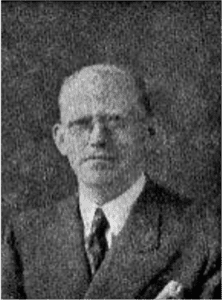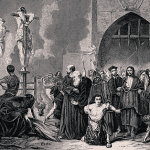A few weeks ago, I delivered the J.M. Dawson Fall Lecture at Baylor University titled “For Jesus, Country, and Robert E. Lee: Not Your Momma’s History of Baptist Missions.” The lecture built on my latest book, The Global Mission of the Jim Crow South, and showed examples of encounters between missionaries and locals in Brazil to demonstrate how missionary racial imagination impacted evangelical missions in Latin America.
One of the examples of missionary behavior that I used in the lecture was that of Frank Purser. Partially because of Purser, in 1923, local faculty and students in the North Brazil Baptist Theological Seminary in Recife, Brazil, rebelled against American missionary personnel. A local newspaper, the Jornal do Rio, featured a translation of what Purser—who had been recently sent to work in the seminary—wrote in an article published by the Southern Baptist missionary periodical Home and Foreign Fields. In his piece, directed to a Southern Baptist audience and titled “Away from Theory, Up Against Facts,” Purser partially showed the shock that missionaries could have when they arrived in their respective fields. He seemed at least mildly misled by what he found when he arrived in Brazil. He wrote:
In the book “Brazilian Sketches,” the author, Dr. T.B. Ray, says that the people who live in Brazil are the “descendants of the Caesars—of the race that ruled the world for fifteen centuries”—Yes— but the majority of the members of the Baptist churches in Rio de Janeiro are also descendants of a mixture of races, which includes a strong element of blood from the blackest of negroes. And many of them still have far to go up the ladder of civilization.[1]

When locals read the reasonably accurate translation of Purser’s claims, they did not rejoice! The minor local rebellion in the seminary resulted in Purser’s reassignment—but missionary Asa Crabtree, who would become one of the most influential figures in Baptist theological education in the region, defended his missionary friend to his superiors. In his correspondence with J.F. Love, then the head of Southern Baptist foreign missions, Crabtree dismissed the incident as a minor misunderstanding caused mainly by Brazilian communication style, which, to him, was at best “more delicate and ceremonial,” and at worst dishonest—unlike the American communication style, presumably more easily adaptable to Christian morality. And while Crabtree never really said it, it seems clear that he agreed with Purser’s opinion.[2] In Crabtree’s assessment, he implied that the Catholics that ran the Jornal do Rio were the true culprits in this situation for monitoring Southern Baptist publications printed in the United States and misrepresenting them to locals as a strategy against Protestant advances in the country.

But if this incident represented an organized Catholic strategy of malicious translating, Crabtree’s Catholic opposition did a sloppy job; they missed so… many… opportunities to reveal Baptist missionary peculiarities. When Purser’s article was translated and printed by the Jornal do Rio, the flagrant racism of Southern Baptist missionaries was broadly advertised and proudly celebrated in missionary publications. If Southern Baptist missionaries in Brazil, while in the field, made their racism known primarily in private settings, U.S. missionary periodicals often made such tendencies public, given their consumption by a predominantly White southern audience drowned in White supremacy.[3]
In the same year that Purser wrote about the uncivilized Brazilian Baptist Blacks. B.C. Hening, then SBC Home Mission Board’s superintendent for Foreigners, Indians, and Negroes, argued in that same periodical that Black Americans themselves admitted to their inferiority and that:
The truth must be burned into our very consciousness that the well-being of both races is best subserved by a clear recognition of the strong demarcation between them and a strict and cheerful acquiescence in the inevitable decree of nature and her God everywhere and all the time.[4]
But even more pronounced than missionary anti-Black racism was their disgust for the idea of racial mixing, which was already a widespread characteristic of Brazilians before SBC missionaries arrived in Brazil. Home and Foreign Fields editor, Gaines Stanley Dobbins—who would later be known for his work on Sunday school pedagogy—was extremely subtle about this issue, writing in the 1920s that:
The Negroes have as much to lose in intermarriage as the whites and should be as bitterly opposed to it on biological and racial grounds. To be a pure-bred Negro is something for the black man to be as proud of as to be a pure-bred Caucasian is for the white man. The solution of the problem of living together is NOT that of amalgamation by intermarriage, and every illegitimate mulatto child is the evidence of some white man’s shame.[5]
Okay, perhaps not so subtle. Dobbins knew of the Brazilian context, and his apparent disgust for mixed races led him to use his missionary knowledge to frame racial segregation in the United States as a necessity for maintaining true American strength. He wrote:
The dread of social equality is the source of greatest bitterness toward the Negro on the part of multitudes of white people. The thought of inter-marriage and consequent negroid progeny is utterly repugnant to any right-thinking white man. One has only to go to certain Latin-American countries where this has occurred to be convinced of the terrible disaster which is involved. The standards of both races are lowered, the purity of the racial stock is destroyed, and irreparable harm done to both peoples. No catastrophe to the human race could be quite comparable to the loss of racial integrity of the American white people.[6]
SBC luminaries broadly shared their racial orthodoxy—were they in the mission field, theological seminaries, or missionary agencies. When William O. Carver—the most influential professor of missions in the SBC before the 1950s—went to Brazil, he wrote back home with a message much like the one that had gotten Frank Purser in trouble with locals: “when illiteracy is around 80 percent, and 80 percent are of Negro and Mulatto blood, the problems are not few or easy.” Later, the head of the Foreign Mission Board, Charles Maddry, felt compelled to tell his Southern Baptist supporters that in the mission field: “there is no social intermingling or intermarriage between folk of different color. It is for the integrity of the white and brown and yellow and black and red races that the race stock should be kept pure.”[7] I suspect that, as traveled and experienced as Maddry was, he knew better when it came to the issue of “social intermingling” between missionaries and locals. There was social intermingling in the mission field, as there was sexual abuse of local women. Though, that is a topic perhaps more suited for a future time.
[1] Frank Purser, “Away from Theory, Up Against Facts,” Home and Foreign Fields 7, no. 7 (1923): 15.
[2] From A.R. Crabtree to J.F. Love, September 15, 1923.
[3] James Cobb, The Brown Decision, Jim Crow, and Southern Identity (Athens: University of Georgia Press, 2005): 45–46.
[4] B.C. Hening, “The Separation of the Races,” Home and Foreign Fields 7, no.2 (1923): 29.
[5] G.S. Dobbins, “Race Prejudice,” Home and Foreign Fields 13, no. 3 (1929): 17.
[6] G.S. Dobbins, Home and Foreign Fields.
[7] Charles E. Maddry, “One Solvent for the Race Issue,” The Commission 2, no. 10 (1939): 346.













